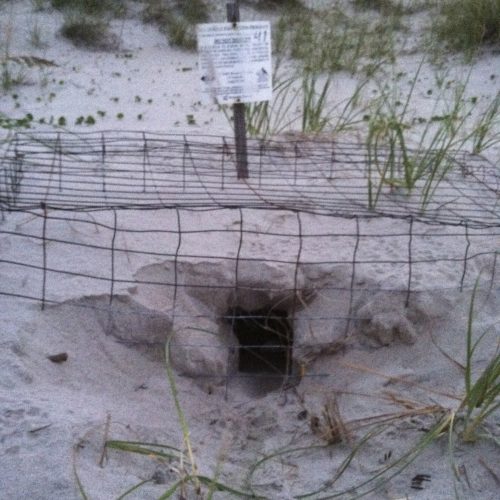Protecting the Nest
During the two months between being laid and hatching, the sea turtle eggs are vulnerable to many dangers.
Threats
Predators are a major threat. Raccoons, ghost crabs, foxes, dogs, and many other species like to eat turtle eggs. Different beaches may have different types of predators that would try to dig up and eat the eggs.
Many of the beaches where eggs are laid are also used by people. It is bad for the nest if it is walked or driven on while the eggs are maturing. If lots of people walk over them, their weight can crush the eggs. If too many people walk or drive on top of a nest, the sand can get so compacted that the hatching turtles can’t get out.
The sea can be a threat too. If the nest is laid too close to the water, the high tide might engulf the nest. Eggs that get wet too often won’t hatch. Storms and beach erosion can also be problems for turtle nests.
Protection
There are a variety of ways that scientists protect the nests.
Relocating a nest that is in a bad spot for erosion or storms is one way to protect the eggs. They also build devices to protect the eggs from predators and put up signs so that people stay away.
Covering a nest can protect it from predators. Covers need to
- Be lightweight so that the scientists can bring them to the nests wherever they are located.
- Be sturdy enough to prevent foxes and raccoons from digging up the eggs
- Have sides that go underground to protect from ghost crabs burrowing in.
- Have holes in the top because the baby sea turtles will eventually need to get out.
- Stay where it is supposed to, so there must be some way to anchor it in the sand.
Nests are also protected by signs and ropes that tell people to stay away from them.
Photos courtesy Bald Head Island Conservancy.






